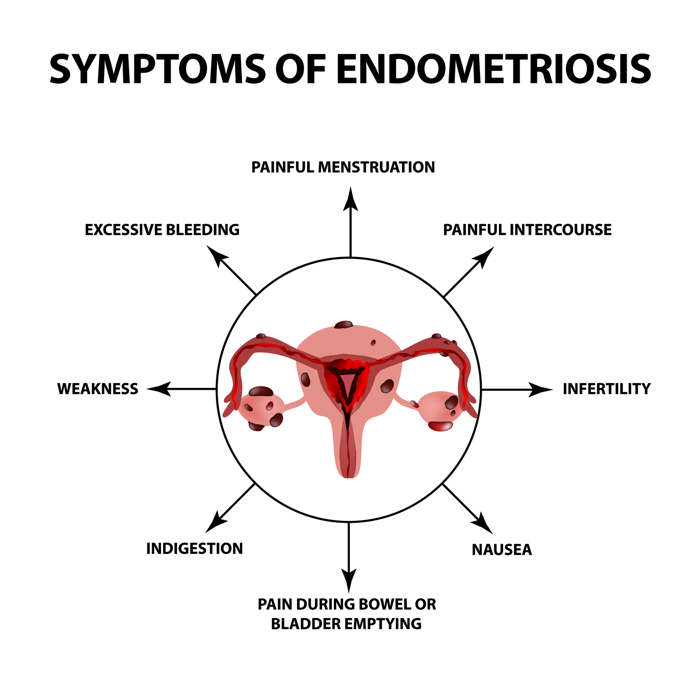Endometriosis is a painful hormonal disorder and an immune system disorder in which tissue similar to the lining of the uterus (endometrium) ends up in "odd" places where that type of tissue is not normally found. The tissue sac responds to the monthly spikes of estrogen and progesterone just as the uterus does.
Some scientists argue that in endometriosis, female immune cells are unable to detect the presence of these "abandoned" tissues and that they are not damaged as usual. You can also browse online to know about the recent myths about endometriosis.

Image Source: Google
In addition to a stronger inflammatory reaction, women with endometriosis often produce autoantibodies (antibodies to healthy tissue) and immune factors that cause inflammatory disease.
Endometriosis is a complex disease in which many factors, including human genetic, anatomical and environmental factors, contribute to the problem.
Symptoms
Endometriosis can be accompanied by profuse bleeding at any time during the menstrual cycle, with severe pain becoming very acute during menstruation. Pain and cramps can start before and a few days before menstruation in a woman, and she can suffer from back and stomach pain, gas, diarrhea, fatigue, and malaise.
Pain severity is an unreliable indicator of the extent of the disease. For example, women with mild endometriosis may experience severe pain, while others with advanced endometriosis may experience little or no pain.
Endometriosis can occur in girls as early as eight or years after menstruation. While many women find that endometriosis symptoms stop temporarily during pregnancy and / or full menopause, this is not always the case.
